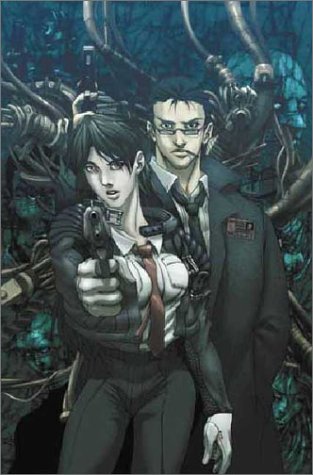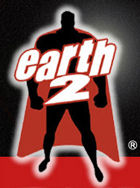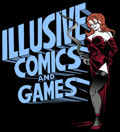| Darkminds:
Paradox
Pat Lee
is the man who brought the recent wave of '80s nostalgia in
comic books, with his labor-of-love work on Transformers.
While he deserves a swift beating with a sack of oranges for
subjecting the world to a comic book version of Thundercats
and a revival of the G.I. Joe comics as a result, Lee
has his charming qualities. He's not a bad artist; pretty
decent one might say, and even "groundbreaking"
back in the '90s when his Anime-American hybrid style made
one of the first successful attempts to bridge the gaps between
American comics and Japanese comics in recent memory.
The book
that brought Lee to noted fame was Darkminds: a mixture
of good-old detective storytelling and the cyber-punk genre.
In its day, it was considered a pretty good book, even warranting
a crossover with Top Cow's lauded (but honestly crap) Witchblade.
So, since
I never picked up the book in issue form, I figured I'd give
it a shot. I ended up with a pretty package, halfway decent
story, and an ending that doesn't do the book a lot of credit.
Darkminds
is the story of the search for a serial killer called Paradox.
Bodies are left all around town, mutilated, with no signs
of murder, possessed of exploded spines and eyeballs or self-inflicted
mortal wounds, as well as no trace of the killer. Detective
Tedeshi Nagawa has been on the case for two years with no
luck. That is, until he's paired with Akane Nakiko, a cyborg
with the ability to "psi-scan" the minds of the
dead and see their final images or thoughts (how a cyborg
accomplishes this feat is never really explained).
But even
with Nakiko's help, Nagawa is no closer to finding Paradox,
until he becomes embroiled in the conspiracy surrounding Nakiko,
the corporate rivalry between Aurora Industries and Atlas
Technology, and a motorcycle gang called the Neon Dragons.
The art
is Lee's strongpoint, but I can say that this book represents
his earlier, unpolished work. While Lee has a knack for depicting
high technology and shows a good use of different perspectives
that help to keep the panels and visual for interesting and
dynamic, his anatomy and facial expressions are terrible.
I'm a big fan of breasts. Heck, who isn't nowadays? But Lee
draws Nakiko with fairly large breasts that defy gravity in
a way that makes Pam Anderson jealous. Not only that, but
he keeps drawing them in positions as if they're pushed up
or in or to the side, when Nakiko is just standing. Unless
there's a servomotor in there, it's just bad anatomical correctness
on Lee's part.
Also,
his faces are too similar. This isn't just Lee's problem but
one that is pervasive throughout manga and Amerimanga, but
the fact that the entire book is in crisp and vibrant color
(except for the faces, which are all a pallid gray) is supposed
to help in the identification process. It doesn't. More than
once, characters got confused (Nagawa for the gang leader
Neon was a constant mix-up for me).
The story
itself isn't bad. Adrian Tsang shares writing duties and helps
to craft a decent and pretty suspenseful story. There's a
well-paced build-up to Nakiko's past and her involvement with
the Neon Dragons, and Tsang and Lee give her a personality
while still remembering that she's a cyborg, and therefore
divest of an overabundance much emotion. The investigative
side of the comic is handled well-enough; not reaching the
level of detail that Bendis is known for, but accurate enough
to entertain fans of Law & Order. Nagawa is a great
"frustrated over-worked cop" and the writers use
him well when paired with Nakiko.
The ending
revelation about Paradox is…just not that satisfying
compared to the level of writing of the other mysteries and
subplots in the book. I chalk it up to this being one of Lee
and Tsang's first forays into writing.
Darkminds
is an okay book with okay art. Warlands and Transformers
are better representations of what Lee can do in comics. The
book collects the entire first volume of the series and it's
printed on that glossy paper that makes a book feel good and
heavy. Image is charging you a whopping $19.95 for the book,
with only a little cover/pin-up gallery in the back as an
extra, so it's a book that you can miss without too much lamentation,
and you should only pick it up if you're already a fan of
Lee's stuff from Dreamwave Productions.
|






